Red Bank Elementary: Five Big Takeaways
CompetencyWorks Blog
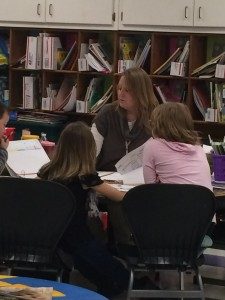 This post is part of the series Competency Education Takes Root in South Carolina. This is the first in the series on Red Bank Elementary in Lexington School District. Follow along with: #2 teaching students instead of standards, #3 teacher perspectives, #4 student perspectives, and #5 parent perspectives.
This post is part of the series Competency Education Takes Root in South Carolina. This is the first in the series on Red Bank Elementary in Lexington School District. Follow along with: #2 teaching students instead of standards, #3 teacher perspectives, #4 student perspectives, and #5 parent perspectives.
Amazing that a five-hour site visit at Red Bank Elementary School with Principal Marie Watson, her staff, and the students could produce so many big takeaways.
Teaching Students, Not Standards: At one point, Watson referred to the difference between standards-based and competency-based education. I asked her how she differentiated these two phrases, which are often used interchangeably. Her insight was so powerful that I’m now embracing it myself. She said that in standards-based systems, the schools teach based on the grade level. The focus is on the standards. Competency-based is about teaching students, starting where they are in their own development and academic level and then ensuring they reach proficiency on the standards. You start with the students. (This is the concept that most of the vendors of grading and tracking systems can’t seem to get their heads wrapped around. They keep creating systems based around the standards in a grade level or course.)
Intentional Blending: There is a lot of talk about models in the world of blended learning, but much less about pedagogy and how the instructional delivery choices reinforce it (or not). The team at Red Bank starts with pedagogy and building a shared understanding of how students learn as well as the implications for teaching before they make choices about products and apps. They think about whether products will support the development of higher order skills (they use the 4 Cs – creativity, collaboration, communication, and critical thinking – as the criteria for making purchasing choices).
Competency Education for the Littlest Ones: Red Bank has one kindergarten class serving four-year-olds and one serving five-year-olds. Watson and the kindergarten teachers helped me to think about how important it is to understand the developmental stages of children and their brain development, especially when it is impacted by poverty. Watson explained, “Some students haven’t had exposure to colors or how to write their name. Some have rarely had books read to them. The idea of letters is totally new to them. It is their developmental stage that shapes whether they take off once they become exposed to new ideas and new skills, or whether they are going to take more time to build these early foundational skills. We have to pay attention to how their memory is developing as well as their motor skills. Some students may take three or four years to reach the level of development they need to become strong readers and learn their numbers with enough fluency that they can thrive in mathematics. We often see them take off and catch up at this point.”
This makes me wonder: Would it be useful to make the interplay between development and standards more explicit for teachers and parents so personalized learning trajectories could be created? If a student’s brain hasn’t developed enough to memorize 1-100, why would we expect them to do so? Wouldn’t it be more valuable to help them strengthen their skills at memorization first? Or perhaps what we need are bands or benchmarks rather than grade-level standards?
Lifting Up Leadership: I visit a lot of schools that have heavily invested in creating mechanisms for student agency, voice, and choice. For student agency, there are specific practices and transparent learning goals/rubrics that allow students to own their learning and advance without waiting for the teacher. Voice is developed through shared vision, codes of cooperation, opportunities to participate in school decision-making, real-world experiences, and of course inquiry-based learning. Choice, well that’s the easiest one…although we often underestimate what it means for students to be able to make informed choices and to make good choices for themselves.
Red Bank added a new mix to thinking about how we engage, motivate, and empower students through their focus on leadership. The Leader in Me program has a lot of depth – just think about what it means for kids to be able to describe win-win situations or first things first. Just think of kids having embraced seek first to understand, then to be understood by the time they get to middle school or synergize (together is better) for understanding collaborative creative processes.
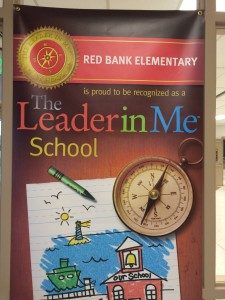
The Power of Transparency: As I walked in and out of classrooms, I started realizing that the power of transparency – of what students are supposed to learn, how they are progressing, the standard operating procedures of classroom management, the standard operating procedures that help develop the routines of learning – serve several purposes. I’ve always thought of transparency as what empowers students to keep learning and keep advancing even when the teacher is busy helping another student.
When I saw how the teachers at Red Bank were using standard operating procedures to help students learn concepts such as the routines of editing or how to think like a scientist, I realized that it could be a powerful way of helping students (especially those whose parents didn’t go to college or are working around the clock to make ends meet) get a second, third, and fourth chance to build their expertise at learning. At the elementary school level, some of the standard operating procedures were building early meta-cognition about the processes of learning and producing.
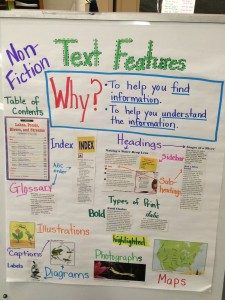
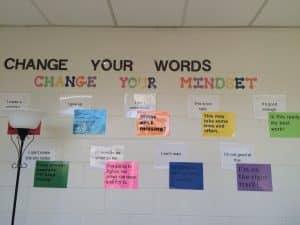
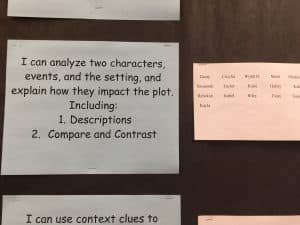
I’ll be writing in more detail about my visit to Red Bank over the coming weeks.
See also:
Part 2 – Red Bank Elementary School: Teaching Students, Not Standards
Part 3 – Red Bank Elementary School: Starting with the Pedagogy
Part 4 – Red Bank Elementary: What Students Have to Say about Personalized Learning
Part 5 – Red Bank Elementary: The Parent Perspective
Part 6 – Reflections on Learning
Part 7 – When Red Bank Went to Lindsay